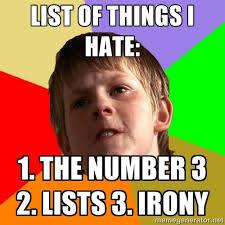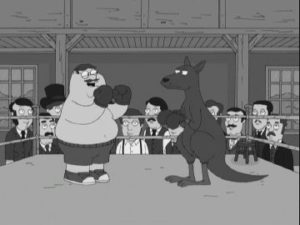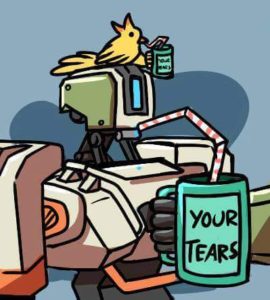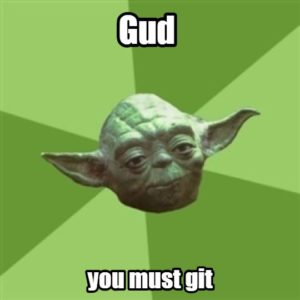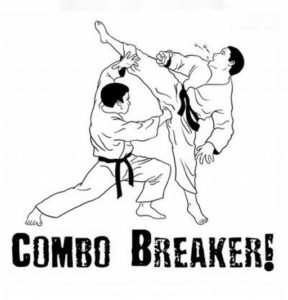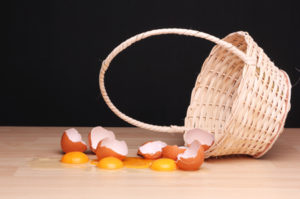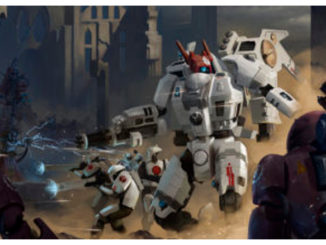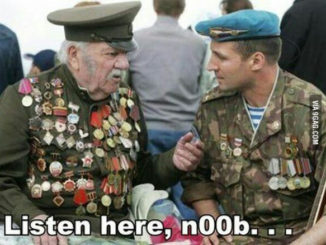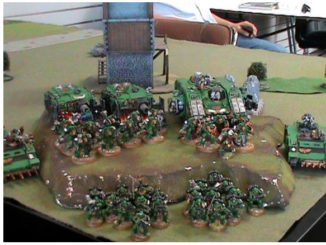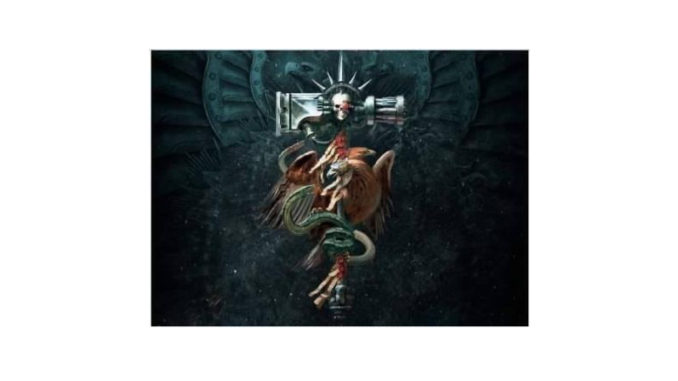
Hey everyone, Danny (AKA Jon Snow for those of you who watched the stream) here to talk to you about how experiences with 8th edition after many, many games played on stream and in the privacy of our own FLGS. What have we learned? Let’s see:
Things Die, fast!
This is something that a lot of people are chattering about, and for good reason. On one hand, you can look at the new and improved Tervigon and see a massive stat boost: 14 Wounds and T8. From a 7th edition mindset, this is Super-Heavy levels of crazy, but in 8th? This is tough, but definitely not immortal. In my first ever game, Adam’s predators with lascannons popped my Tervigon on the top of 1. In another game, we saw a Stormsurge go from ready to kick ass and take names to barely breathing after a single round of shooting. In general, very few units or characters survived more than one dedicated attempt to kill them, whether by shooting or assault. Yes, most models have seen an uptick in stats, but this is all balanced out by the fact that weapons are far more brutal than they have been in a long time.
This is especially true when you get the right tool for the right job. One Carnifex with just Scything Talons can absolutely murder Terminators, but a lot of small arms fire is not going to shift them like a Harlequin Troupe and Troupe Master. That same Carnifex with Talons isn’t going to do much against a Contemptor Dreadnought while that Dready is going to have some fun with that Carni.
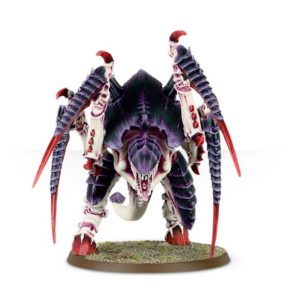
This is really what is going to win you games: use the right tools for the job. You need to make sure you have high volume, low damage weapons that you can pump into light infantry. You need to make sure you have middle grade fire power that does D3-3 wounds with ok-decent AP to help take down heavy infantry, characters, and smaller monsters/vehicles. Of course, you can’t forget the real heat, so make sure you have weapons capable of hurting a T8 model with 10+ wounds and at least a 3+ save. If you are lacking any of these, you’re gonna have a bad time, and if you allocate these resources poorly, you’re gonna have a real bad time.
Things die fast in 8th edition if you use the right weapons on the right targets.
Terrain is exceedingly important:
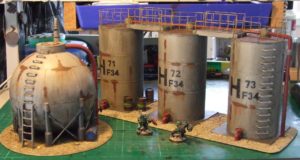
Terrain is often overlooked in how important it actually is to the game state. Most people just throw a few things out there without too much thought, and even for those that aim to create characterful, cohesive tables can overlook that the terrain pieces and placement have a direct impact on the game itself.
Because weapons are so deadly, cover is huge. Infantry really need that +1 save to help them either hold objectives or cross the board. The way the rules are written though, you do not get a cover save for being obscured unless you are inside a terrain piece, so having lots of small pieces of terrain with no clear footprint or just too small for most units to actually be within is going to really hurt infantry armies.
On the flip side, infantry are the only units able to really move through terrain without issue, and if you have tables with a lot of ruins with multiple levels on them, you are really ensuring that infantry dominate the game as non-FLY monsters, vehicles, cavalry, and bikes cannot get to these units. If you are trying to pull a Monster-Mash melee list, you absolutely need Flying monsters to be able to get to these infantry units. Of course, if a table has none of these, then infantry are again screwed.
In terms of movement, we can no longer move trees to make models fit, and in general, it is pretty clear that terrain is what it is, so non-infantry can be pretty constrained if not boxed in by terrain if there is no thought to how larger models can navigate it.
Lastly, we all know that Line of Sight (LoS) blocking terrain is critical, but it is only more so. You need a good mix of terrain that blocks LoS to the small stuff as well as the big stuff. Having a barren wasteland for a table really only guarantees that the shootiest list wins, especially if they go first.
It will be interesting to see how TOs adapt to this. Right now, terrain, whether by GW or 3rd parties, is not entirely designed with these concepts, so I think we’ll find that we need to relook at how we build tables to ensure that there is a healthy mix of terrain types. TOs need to understand when they build their tables where you are giving infantry an almost unassailable position and when you are giving clear blind spots for larger models to hide within. If we see TOs running events with the same kind of terrain as we have had before, I think infantry mostly wins here as the number of multiple level ruins is super common.
Piling-In:
This is another big change, one that will inevitably catch people off guard. In 8th edition, models pile in before and after they swing, not at the end of a combat. This means that a unit can move in 3 inches, do its swings, and then move forward or even orbit to the sides in the same activation essentially, either catching other units into the combat, blocking fall-back moves for units, or opening lanes for other units to consolidate into the engaged unit. There is a lot of room for trickery here, and it is also easy to forget that this happens, so a player may do their thing and move on to another assault and then assume that everyone piles in later, but they don’t. You’ll also see this quite often:
Player A’s squishy but killy unit charges Player B’s chumps. Player B’s killy character is too far to perform a heroic intervention as planned by Player A. Player A piles in, attacks, kills some chumps, and then piles in again to get deeper into the lines. The thing is: the combat phase isn’t over, and when they piled in, Player B’s killy character is suddenly within 1 inch of an enemy, so after charges, it can activate and wreak havoc on Player A’s squishy but killy unit.
Just because your unit piled in at the end of its combat does not mean combat is over or that it is not a valid target, so be mindful of how you are moving forward. This also means that you as a gunline or defensive player need to realize that an enemy unit essentially moves up to 6 inches after their charge, if they are canny. Don’t forget, you have to move closer to the closest enemy model, so you can orbit, moving mostly to the side or around a target to engage other units, but on the flip side, if you go Base to Base (B2B) with an enemy model, you are now stuck there.
So much depth. So much room for shenanigans. So good.
The Back and Forth of Assault
This is really part of the previous, but it is important enough to keep in mind. Combats do not resolve brawl by brawl but rather fighters by fighters. The difference here is that there is a whole different mini-game of combat about who you activate and in what order. Typically, we are used to saying this: “Ok, let’s just start and go from Left to Right” and the problem with that is: it lacks any tactical consideration of how the combats actually work.
A great example is this: Player A charged Player B to help out his screening unit that was charged last turn. There is also another combat from the previous turn where a degrading monster with only a wound left before losing combat power is facing down a weakened but still very dangerous squad. Player A has to resolve his charger first, so he does and mostly wipes out Player B’s unit. Player A gets to choose now from his units that were stuck in combat, and he chooses to continue the same combat as before, and his almost dead unit manages to pick up the last few stragglers of Player B’s unit. It is now Player B’s turn to activate, and there is only one choice, the monster. The monster takes down a few more of the squad, and now they are left mostly ineffective. Player A activates them and fails to bring the monster down a degradation level.
So, what is wrong here? Well, Player A wasn’t thinking about maximizing his potential damage. He got stuck focusing on killing one unit and resolving one neat combat like we’re used to, but the better play was for him to try and kill or at least weaken the monster to where its attacks wouldn’t be as effective and thus preserving more of his stronger squad. By not thinking about the order, Player A essentially gave much better odds that his opponent’s monster was going to cause further problems in the game, and now Player A traded wiping a squad (which may have happened through morale anyway) for one of his better units. That’s a bad trade.
Anyway, theoretical aside, you have to approach the assault phase like a resource. Each unit that can swing before an opponent is a resource to use, and you have to plan the order to help maximize your damage and mitigate your losses. Of course, you also have to watch out for the Stratagem that interrupts the charge order (it only works on charges), so make sure that your most critical unit is selected first because otherwise, you can be interrupted and your plans foiled.
List-Building and CPs:
So, the fact that every army now has the same standardized detachments makes list-building an interesting exercise. Namely, you have to figure out how you are going to balance what you want to bring, your Command Points (CPs), and your drops.
So, in terms of what you want to bring, you have to ask yourself: Do I want lots of HQs? Do I want lots of Fast Attack? Do I want a balanced army? Do I want to skew (more on this later)? Do I want tons of crazy assassins or an armored company or just bloodthirsters on bloodthirsters? You need to select the detachments that are going to give you the slots to make the army you want.
You also have to remember that CPs are a thing. Being able to reroll critical dice like saves, seize the initiative, end of game, plasma overheats, and what not is absolutely clutch. Games are won and lost on a dice roll sometimes, and wouldn’t you like to have a back pocket reroll? I would. Not to mention as previously discussed, being able to interrupt combat order during charges is mega-huge. So is being able to ditch and draw a new Maelstrom objective. CPs are real, and they are amazing tools, but you have to ask yourself, how much do you want them and what are you giving up to get them?
Lastly, you have to manage your drops (the total number of units in your army). Whoever finishes deploying first, goes first. That’s huge. If you want to go first because you are a melee army that needs to cover ground or a shooting alpha-strike army, you need to think about how many units you have to put down on the table or declare are in reserve. Yes, you still have to declare a unit as part of your deployment, even if it doesn’t go to the table. The exception to this are units in transports as you can declare them all together as one drop. If you really need first turn, you absolutely have to consider how many units are in your army.
Mixing all three of these is tough. If you want a super balanced force with a lot of CPs, the Brigade is perfect, but you’ll almost always go second, so you have to build with that in mind, namely you need to know how you can protect valuable pieces like Monsters or Vehicles. If you want a super elite, super alpha-striking army, you either need to play the Superheavy Detachment or have a lot of transports and a limited CP pool. If you want to take a specific skew list or theme, then you probably losing out on CPs and maybe even drops. Is there a perfect balance? It is way too early to tell. We need real data from major tournaments to see what the average number of CPs and drops are in tourney-quality lists.
This does make the army building part of the game far more complex, even when using Power Level (which is the superior way anyway). You need to really think about the strategic choices you are making as you design an army in this edition, much more so than “Do I Ripwing or Deathstar?”
Combo!!!!!
There were not a lot of super crazy combos in 7th edition outside of layering lots of special rules onto a single unit (thus creating the Deathstar). 8th edition is far more like Warmachine/Hordes than 7th edition 40k in that there are a ton of crazy combinations, some easy to see, some more Rube Goldberg-esque layering of different abilities, but all with the desire to achieve an unexpected result. On the stream, we saw a few of them.
First was the Harlequin Starweaver of doom where a single Starweaver loaded with melta pistols (who can fire out of it thanks to being open-topped) was able to move 32 inches up the board (thanks to a nifty psychic power from an advancing Shadowseer) to put a bunch of heat (and more than half of its wounds) onto a Land Raider on the top of 1.
Another was the Battle Sister Repressor of doom. By taking a Repressor (a FW vehicle for Sisters) that has 6 firepoints in it, and then by throwing in a unit of Dominions, (special weapon toting Sisters who confer Scout to their transports), you have a vehicle loaded with up to 4 meltas, flamers, or stormbolters that gets a free move at the start of the game. On a 2+, with an act of Faith, it gets an additional move, so suddenly you can have a single unit of melta crossing the board before an opponent can do anything, and if you have enough Imagifiers (or Celestine or both) in your army, you could have several Repressors at point blank range pumping melta into any hard target or massed flamers into a soft target. It is brutal.
Tyranids can do the old Swarmlord plus Catalyst trick where you can rocket say a Dimacheron up to 48 inches in a single turn with an average threat of 38 or even just an auto-charge from Swarmlord out of a Tyrannocyte. Chaos has Warp Time fun to use of course, and in general, if you look close enough, just about every army has a ton of tricks to exploit.
This edition is all about finding those sweet, sweet combos and making use of them while also knowing how to insulate yourself from these. There will be a painful learning curve as combos are developed, so get used to it. You are going to get caught with your pants down at some point. Also, be sure to bring chaff to help absorb some of this or block off important pieces.
To Skew or not to Skew?
This is the epic question that we left with now, and time will tell. Do you build Skew Lists or not? A Skew list being an army designed to so overly commit to one aspect that most other lists are incapable of dealing with that aspect. In other words, it asks the question: “Can you deal with X number of Y?”. If yes, you lose, and if no, I win.
The game is pretty well balanced so far in the sense that there are a lot of gives and takes. The missions definitely favor bodies over power seeing as claiming objectives is about quantity, not quality with a few exceptions. Armies are far more internally balanced, and while some armies seem stronger than others at the moment, this is probably the most balanced 40k has been since, well, ever.
With that in mind, do we still try Skew Lists? With an all flyer army really work now? Does it pump out enough heat to table an opponent? What about 4 knights? Monster-Mash Nids, Daemons, or Tau? Is Smite spam really going to be an effective army? What about 200+ Boyz/Conscripts/Nids?
It is a tough question because balanced armies seem to be favored by the game design itself, but balanced armies do have trouble with skew as there is just too much beef to deal with. We will have to see how the tournament scene shapes up because it is too hard to tell based on only a few games each if Skew is still king or if TAC lists are actually viable. My hope is that TAC is king now, and this would be only more true with Power Level, but whatever.
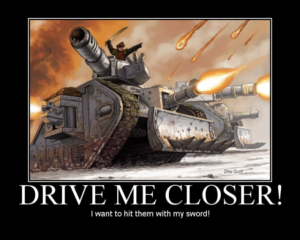
So there you have it folks. If you didn’t watch the Stream, you didn’t win cool prizes, but hey, check out our channel as we try to fill it with goodness. Also, remember that we can give stuff away because of our most beautiful and beloved supporters at Patreon, so maybe you should get on that train. Thanks for reading, and of course, if you have an idea for a weekly column that you’d like to see me write, please let me us know. Now that formations are dead, what else do I have to occupy my time?

